#nadia nerina
Text
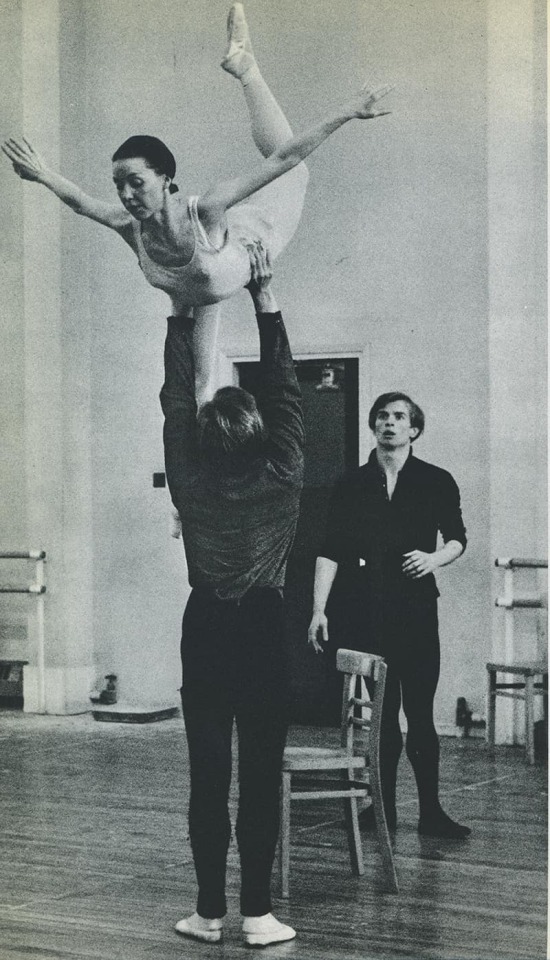
Erik Bruhn rehearses a lift with Nadia Nerina as Rudolf Nureyev looks on.
"Sleeping Beauty", London, 1961
Photo by Michael Peto [x]
76 notes
·
View notes
Note
for the oc ask game: tatiana
OC ASK GAME -> Accepting
Full name: HRH Tatiana, Princess of Danforth (née Lady Tatiana Grace Farnsworth)
Best friend: She doesn't have a best friend. Yet.
Sexuality: "Stright"
Favorite colour: Periwinkle
Relationship status: Widowed, but like, attempting to date
Ideal mate: James. Yes, that's a full sentence.
Turn-ons: Physical touch, beards, being +40 with a full head of hair, good humour, family man, well-tailored suits etc., etc.
Favourite food: Rasberry almond tarts! She loves baked goods.
Crushes: From her childhood specifically: River Phoenix. She cried for days when he died. One of her sisters also had a poster of Jon Bon Jovi that she couldn't stop staring at when she was 10.
Favorite music: She loves Janet Jackson and Britney Spears!
Biggest fear: "Losing" the rest of her family through death or estrangement or some other vague catastrophic event
Biggest fantasy: Getting some form of validation and praise from her loved ones is up there.
Bad habits: Her possessiveness has gotten her in a lot of trouble throughout her life. A new favourite of hers is bed rotting.
Biggest regret: Probably not being firmer with James and insisting he gets help (unreasonable, because as we'll see she did this several times)
Best kept secrets: Probably, y'know, the whole James thing
Last thought: Something involving Merlot, probably
Worst romantic experience: Getting harassed by the press when she started dating James. Nothing to do with the romance itself, but it's connected to it. She also puked on him once.
Biggest insecurity: Her perceived lack of tangible accomplishments in life
Weapon of choice: White woman tears
Role Model: Queen Irene, Nadia Nerina, Madame Rousseau (her old dance teacher, Her DeeDee (maternal grandmother)
5 notes
·
View notes
Photo
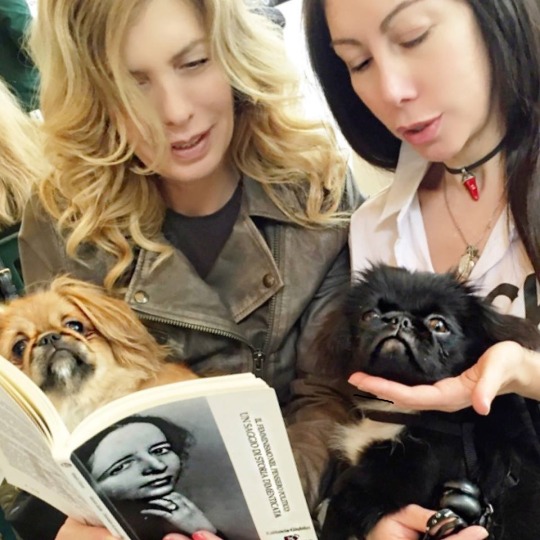
insieme a Nadia La Bella @asmileplease con Nerina Mia ed il libro “Il Femminismo nel pensiero politico. Un saggio di storia dimenticata”
0 notes
Photo
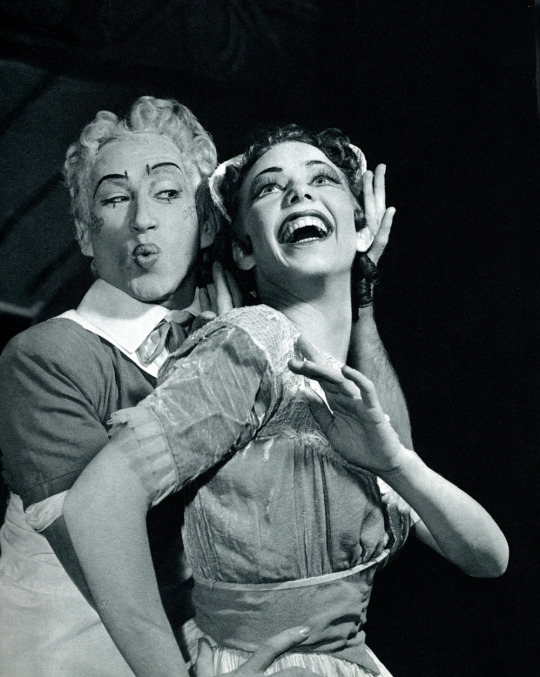
Alexander Grant and Nadia Nerina - photo by Serge Lido in Ballet 5, 1955
#alexander grant#nadia nerina#serge lido#Ballet 5#dance#ballet#dancer#ballerina#ballerino#danseur#bailarín
19 notes
·
View notes
Photo
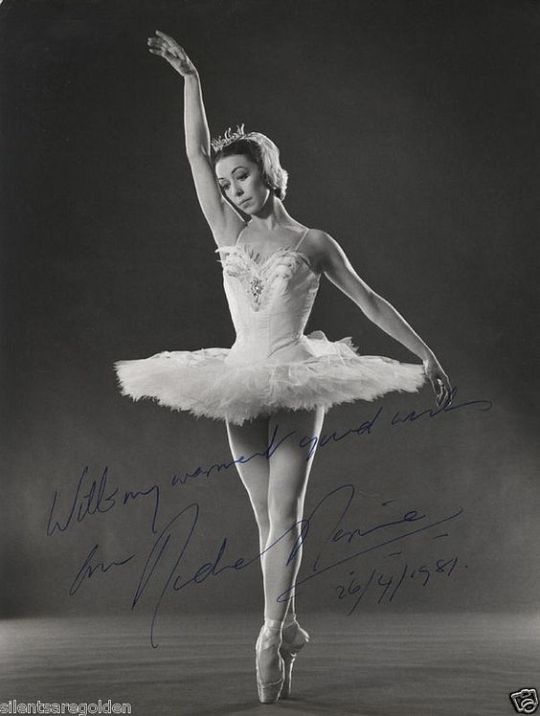
Nadia Nerina as Odette in Swan Lake (Royal Ballet)
107 notes
·
View notes
Photo

Nadia Nerina and David Blair in Robert Helpmann's Elektra
The Art of the Royal Ballet by Keith Money, 1966
29 notes
·
View notes
Note
Favorite ballets/productions? Dancers (past and present)?
Past: Vladimir Vasiliev, Manuel Legris, Ekaterina Maximova, Galina Ulanova, Maya Plisetskaya, Mikhail Baryshnikov, Ulyana Lopatkina, Dominique Khalfouni, Sylvie Guillem, Gelsey Kirkland, Natalia Bessmertnova, Yvette Chauviré, Galina Mezentseva, Laurent Hilaire, Vyacheslav Gordeev, Alla Osipenko, Irina Kolpakova, Svetlana Beriosova, Nadezdha Pavolva, Mikhail Lavrovsky, Rudolf Nureyev, Nina Timofeyeva, Tatiana Terekhova, Yuri Vladimirov, Rudolf Nureyev, Moira Shearer, Carla Fracci, Alessandra Ferri, Natalia Makarova, Virginia Johnson, Anthony Dowell, Denys Ganio, Erik Bruhn, Arthur Mitchell, Nadia Nerina, Maria Tallchief, Noëlla Pontois, Ghislaine Thesmar, Elizabeth Platel.
Present: Mathieu Ganio, Karl Paquette, Edward Watson, Nina Kaptsova, Vladislav Lantratov, Evgenia Obraztsova, Natalia Osipova, Olesya Novikova, Svetlana Lunkina, Diana Vishneva, Ekaterina Krysanova, Kimin Kim, Vladimir Shklyarov, Viktoria Tereshkina, Francesca Hayward, Lucia Lacarra.
Favorite Ballets (Productions): Giselle (Paris Opera, Peter Wright), Don Quixote (Grigorovich), Dances at a Gathering, La Sylphide (Lacotte reconstruction), Sylvia (Ashton), Apollo, Symphony in C, Agon, Jewels, Le Parc, Le Jeune Homme et la Mort, Eugene Onegin, Paquita (Lacotte rec.), Other Dances, Infra, Woolf Works, Le Corsaire (Ratmansky/Burlaka rec.), La Dame aux Camélias, Manon, Symphonic Variations, The Nutcracker (Grigorovich/Wright - in spite of many growing tired of it/disliking it, I still cherish this ballet for being what sparked my undying love for ballet and music at a very early age).
96 notes
·
View notes
Text
Ballerina Birthdays
JANUARY
2 - Vera Zorina (1917)
8 - Bronislava Nijinska (1891)
8 - Galina Ulanova (1910)
10 - Rosella Hightower (1920)
14 - Moscelyne Larkin (1925)
17 - Nora Kaye (1920)
17 - Moira Shearer (1926)
18 - Belinda Wright (1929)
24 - Maria Tallchief (1925)
FEBRUARY
12 - Anna Pavlova (1881)
20 - Marie Rambert (1888)
20 - Mia Slavenska (1916)
27 - Antoinette Sibley (1939)
MARCH
2 - Tamara Toumanova (1919)
7 - Yvonne Chouteau (1929)
8 - Cyd Charisse (1922)
8 - Lynn Seymour (1939)
10 - Tamara Karsavina (1885)
13 - Irina Baronova (1919)
17 - Tamara Geva (1907)
25 - Lydia Kyasht (1885)
29 - Diana Adams (1926)
APRIL
22 - Yvette Chauviré (1917)
29 - Zizi Jeanmaire (1924)
29 - Colette Marchand (1925)
MAY
18 - Margot Fonteyn (1919)
23 - Tatiana Riabouchinska (1917)
JUNE
1 - Nathalie Krassovska (1918)
4 - Nina Vyroubova (1921)
6 - Ninette de Valois (1898)
11 - Beryl Grey (1927)
12 - Marina Semyonova (1908)
15 - Nini Theilade (1915)
JULY
1 - Leslie Caron (1931)
24 - Janine Charrat (1924)
AUGUST
11 - Allegra Kent (1937)
20 - Carla Fracci (1936)
23 - Margot Lander (1910)
29 - Sono Osato (1919)
SEPTEMBER
18 - Agnes de Mille (1905)
24 - Svetlana Beriosova (1932)
OCTOBER
2 - Tanaquil Le Clercq (1929)
5 - Ida Rubinstein (1883)
10 - Ludmilla Tchérina (1924)
19 - Marjorie Tallchief (1926)
21 - Lydia Lopokova (1892)
21 - Nadia Nerina (1927)
NOVEMBER
2 - Sally Gilmour (1921)
7 - Pearl Argyle (1910)
20 - Alexandra Danilova (1903)
20 - Maya Plisetskaya (1925)
DECEMBER
1 - Alicia Markova (1910)
1 - Violette Verdy (1933)
21 - Alicia Alonso (1921)
19 notes
·
View notes
Text
Coppélia with Vadim Muntagirov and Marianela Nunez, photo by Bill Cooper ROH
Everyone who has followed The Royal Ballet in rehearsal during World Ballet Day or watched the interval clips and interviews during the intervals of the company’s live cinema relays will know Christopher Carr. The Royal Ballet’s Guest Principal Ballet Master isn’t afraid of raising his voice, clapping his hands loudly and stamping the floor with his feet. He gets results, which is why, at nearly 70, and after 50 years with the company, he is still called back to whip the company into shape. Most recently, for Coppélia.
I always do my damnedest to get the best out of the person I’m coaching. Because of the ballet and the choreographer who I am representing – because I mostly do ballets by people who’ve died – I have to do my very best. Also, it’s the dancer’s reputation, it’s the company’s reputation, it’s my reputation, and it’s the choreographer’s reputation. It’s incredibly important. It’s a lot to handle
Coppélia was first staged by Nicholas Sergeyev for the Vic-Wells Ballet (the company that evolved into The Royal Ballet) with Ninette de Valois as Swanilda in 1933. The current production is a staging by de Valois created in 1954 using the Lev Ivanov and Enrico Cecchetti version from 1894 which was based on Petipa’s choreography and preserved in the Sergeyev Collection. Nadia Nerina and David Blair were Swanilda and Franz, and Dr Coppélius was played by Frederick Ashton.
I think de Valois’ choreography is incredibly musical. It absolutely goes hand in hand with the music, and Delibes, of course, created this score which tells the story incredibly well just with the music alone, so add the mime sequences, of which there are quite a lot, and it all fits together perfectly. In fact, when we’re rehearsing, I sometimes say to the music the words that they are miming because they are so compatible, it’s unbelievable,
De Valois was a very strong woman. She was the director of the company when I was at the school, and so I knew her when I did a couple of lead roles in my school performance, which was in 1967, I think, and she oversaw some of that.
When I became ballet master, we were still doing her production of The Sleeping Beauty so I worked alongside her a little. I thought she was fantastic and direct. She was a bit like me really. She said what she thought and if people didn’t like it, that was tough.
The last outing of de Valois’ Coppelia was in 2006 with dancers such as Xander Parish and Steven McRae hidden away down the cast list. One dancer was making her debut as Swanilda, Marianela Nuñez.
We haven’t done it for 13 years and not long before that it was dropped completely from the repertoire here. I joined the touring company in 1967 and I joined this company in 1970 and it was not performed in either.
Coppélia with Gary Avis and Marianela Nunez, photo Bill Cooper ROH
Coppélia with Gary Avis and Marianel Nunez, photo by Bill Cooper ROH
In fact, for 30 years, until 2000, the ballet was absent from The Royal Ballet repertoire.
It was only when I was a ballet master that Anthony Dowell saw the designs somewhere [by Osbert Lancaster] and he thought how fantastic they were and decided to revive the ballet. That was when I got introduced to it. I had danced Franz and a peasant boy with a small group of dancers, which used to be called Ballet for All, years before, but I’d never danced the ballet with the company, so it was a big learning curve for me. We had the Benesh notation score, which is fantastic and we use it a lot here. And of course, we had video and other things to look at. This time Kevin O’Hare and I have slightly adjusted things – just a tiny bit. We’ve made it a little more believable.
For example?
When we got down on the stage the very first time for Act Three I did know, but I’d forgotten, that actually the church doors are practical, you can open them, and there’s a backing and everything, and you can get up on the stairs. But in the third act we never actually used that entrance at all. So I said to Kevin why don’t we use it. So we did, and it works very well.
What’s changed?
For example, before the pas de deux starts in Act Three, what used to happen up until now was that Franz used to come to the stage and he used to, first of all, say to the betrothal couples, “Have you seen Swanilda?”, and they’d say, no. And then he would go over to the inn, and he’d ask the innkeeper, “Have you seen Swanilda?”, and he would say, no. And then she would appear from out of her house, which was slightly corny. So I suggested to Kevin, why on earth don’t we actually bring them both out of the church? So we did. And they both come out of the church doors, down the steps, there’s a sprinkle of confetti, and then they do the wedding pas de deux, which I think is magic because it’s if they’ve just been married.
What would Madam have said?
I have asked for forgiveness from Dame Ninette de Valois, and I think she’s granted it.
Christopher Carr
Christopher, when you are restaging a ballet, how free are you to change elements of the staging or choreography? If you have a dancer in front of you who can do three instead of two pirouettes would you put it in?
No, I do not do that. I mean, that is what is done with a new ballet. Frederick Ashton was very clever with that. Kenneth MacMillan, with whom I worked very closely, was very clever too at casting someone who was correct for the role, and then during the choreographic process, he would extract from the dancer their best possible quality. If a girl could turn well, he would put lots of turns in, if a girl could jump well, there’d be lots of jumps, if she could beat really well, there’d be lots of beats. So that is the choreographer’s job and that is what set down on paper. But it is not my job to start changing stuff like that.
The only thing I would change, though I seldom change anything, is if a dancer is struggling with a certain section of a ballet or a certain step and they find a way of doing it, which is slightly easier. I would allow them to do it because, at the end, the choreographer is going to look better, the dancer is going to look better, and the public will be more satisfied because there are no problems and the dancer is comfortable with what he or she is doing. And that is the only reason I would change anything. But if somebody’s doing a solo in a ballet and you change one thing to make it more comfortable, and you change another, and you change maybe another, and you’re up to about three, then in the end they’re miscast. They should not be doing the role. Otherwise, I’m re-choreographing the whole thing.
What about modifying acting styles? So much has changed since the 1950s, and Coppélia is famous for its possible cutesiness.
I retired as a full-time ballet master 12 years ago, but when Kevin said that he wanted to bring Coppélia back for Christmas and that he’d like me to do it, I got to work on it and I thought to myself that it was a brave choice. Why did you want to do this? But as we started it, and we got into it, we made some minor adjustments that has changed it a lot.
It really took off at the general rehearsal, when the house is kind of half full. Marianela was doing it, who had done it before, and Vadim too, who had not done it before, and the house was ablaze. You could tell it was going to be a success from that rehearsal. It was fantastic. Absolutely fabulous.
And the laughs?
Oh yes. Even the girls creeping into the house and back into the room and everything, they find amusing. As I said, the mime is fairly simple and it fits the music, so I think the public, even if they’re not ballet educated, can understand it.
There are lots of performances and lots of casts. Can you tell me something about the first-night cast and the cast that will be seen in the cinema relay? Marianela Nuñez?
Marianela had done it before. I think she was one of Swanilda’s friends and she made it to Swanilda before we lost it for 13 years, and she has got a lot of experience both in acting and in ballet technique. Of course, her confidence was enormous, and if you watch the live screening, you will see that she is totally into it big time. She knows how to play the jokes, and her timing is impeccable.
Coppélia with Francesca Hayward Gary Avis, photo Bill Cooper ROH
And Francesca Hayward, who danced on the opening night?
Frankie is a much sweeter dancer, a much softer dancer and it was a more childlike approach. It was the very first time she had done it and for the two weeks leading up to her first performance, which was the first night, she was ill! She hadn’t even completed the ballet at all, and she didn’t learn all the ballet until the day before the actual opening night, but she danced very, very well.
Gary Avis as Dr Coppélius?
Gary Avis, I believe he told me, had done it before with English National Ballet. I think in Ronnie Hynde’s production, which I’ve not seen. I’ve not seen, dare I say, any of the productions of Coppélia except this one, not even Peter Wright’s. Gary’s absolutely fantastic. Once again, the experience comes out. He’s a brilliant actor, the timing’s impeccable with the jokes, it’s a fantastic, and fully believable performance.
The cinema Franz, Vadim Muntagirov?
Vadim is a fantastic technician, a beautiful dancer, and he has the most incredible jump. Also, he is one of the nicest people I’ve ever met in my life. When I did The Two Pigeons, which was the very first time I worked with him, we were about two weeks into the rehearsals when I said to him, Vadim, are you really as nice a person as you seem? Nobody is as nice as that. And you know what? He is! There’s not a bit of venom or malice or anything in his body at all. He is goodness beyond belief and a fantastic dancer.
And the first night Franz, Alexander Campbell?
Alex Campbell did amazingly well. He’s very good on stage. A very good actor, and he gave a very confident performance. He’s also a good technician. He really came up to the mark with Frankie. Fantastic. Yes, really, really good.
It’s obviously hard work being a dancer, but it looks like a very hard job being a ballet master, especially with the responsibility it entails.
You know, everybody thinks it’s really easy sitting in the front and taking the rehearsal but it’s not, there are so many facets to it. If there’s a room full of people, you’ve got to conduct all the people, make sure they’re watching what you’re doing, that they’re not talking but listening, and they’re not on their phones… there must be none of that going on. You must direct the music, you’ve got to make sure the steps are right, you’ve got to police the steps because if you don’t police it some of it will erode. It’s not deliberate, but subconsciously the dancers will make it become slightly easier. You’ve got to keep a grip on all these things and keep the energy going, which is sometimes hard until half-past six at night. But you know, it’s what you have to do.
As you’re whipping everyone into shape, you must also see bad habits creep in.
Oh yes. There are dancers, for some reason, who think they’re going to get a better arabesque line if their leg is not behind their hip but it’s absolutely not true. It should be directly behind your hip and then you get a true arabesque line.
Chassés are also really difficult. Ashton ballets are full of chassés, where you push your foot across the floor with a bent knee. It’s extremely difficult to do, and quite tiring, but Ashton loved them and to get people to do them is not easy. It’s much easier when you just do a step, like walking, instead of pushing into the floor. But the thing about the chassé is that actually it gives the work more depth and more gravity. If you’re just stepping you’re always up, whereas it’s fantastic when you dance, if you get a lower down and then you get a higher up, which if you don’t do the chassé properly, doesn’t happen.
Things like that go, unless you tell them and then you’ll get it eventually. Not everybody will because you’re only working with a certain person’s talent at that stage in their career. You’re always working to see what they can do at this stage in their lives. Of course, I try to push because it’s going to be a better product in the end, but you’ve got to be careful when you’re pushing because you can actually push to injury.
How do you judge where the line is that you’re not going to push someone over?
You’ve got to weigh up carefully what you’re doing – is it going to get better, will they achieve more, or is it better to leave it, and maybe try again in another day or another week.
So you’re also a psychologist.
Quite a bit of psychology goes on as well. I have been rehearsing now probably 35 or 40 years, and it’s taken me all my time to get to this, to have this knowledge that I now have, with the musicality, the choreography and the psychology and how to try and manipulate the room and get the best you can possibly get.
I just do my absolute best every time.
Coppélia with Marianela Nunez, photo by Bill Cooper ROH
Coppélia from The Royal Opera House is live in cinemas worldwide on 10 December 2019 at 19.15 GMT
Interview: The Royal Ballet’s Ballet Master, Christopher Carr, on mounting Coppélia, the company’s dancers and technique Everyone who has followed The Royal Ballet in rehearsal during World Ballet Day or watched the interval clips and interviews during the intervals of the company’s live cinema relays will know Christopher Carr.
#Alexander Campbell#Anthony Dowell#Francesca Hayward#Frederick Ashton#Gary Avis#Kenneth MacMillan#Kevin O&039;Hare#Marianela Nuñez#Ninette de Valois#Peter Wright#Royal Ballet#Vadim Muntagirov
0 notes
Photo
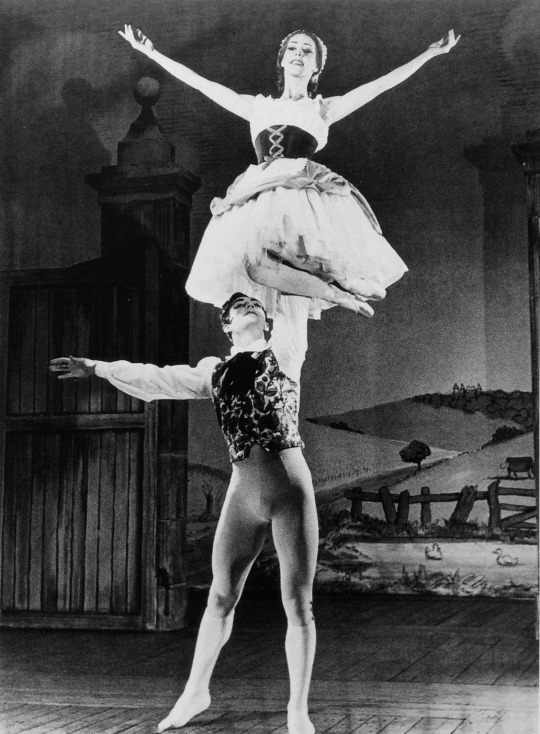
Frederick Ashton, La Fille Mal Gardee
David Blair and Nadia Nerina
ph. Bill Cooper
116 notes
·
View notes
Photo

Nadia Nerina in Elektra (Royal Ballet, 1963)
14 notes
·
View notes
Photo

Robert Helpmann's Elektra featuring Nadia Nerina
The Art of the Royal Ballet by Keith Money, 1966
18 notes
·
View notes
Photo

Nadia Nerina in Robert Helpmann's "Elektra" - The Royal Ballet 1963
28 notes
·
View notes
Photo
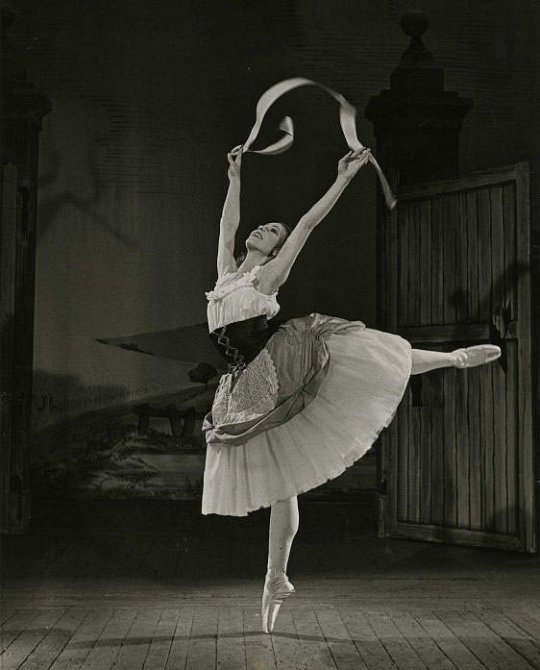
Nadia Nerina in 'La fille mal gardee'
15 notes
·
View notes
Photo

Rudolf Nureyev and Nadia Nerina rehearsing Don Quixote in 1962
126 notes
·
View notes
Photo
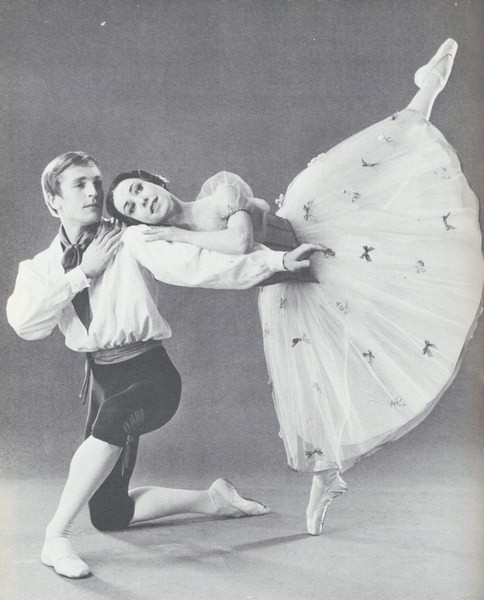
Nadia Nerina
36 notes
·
View notes